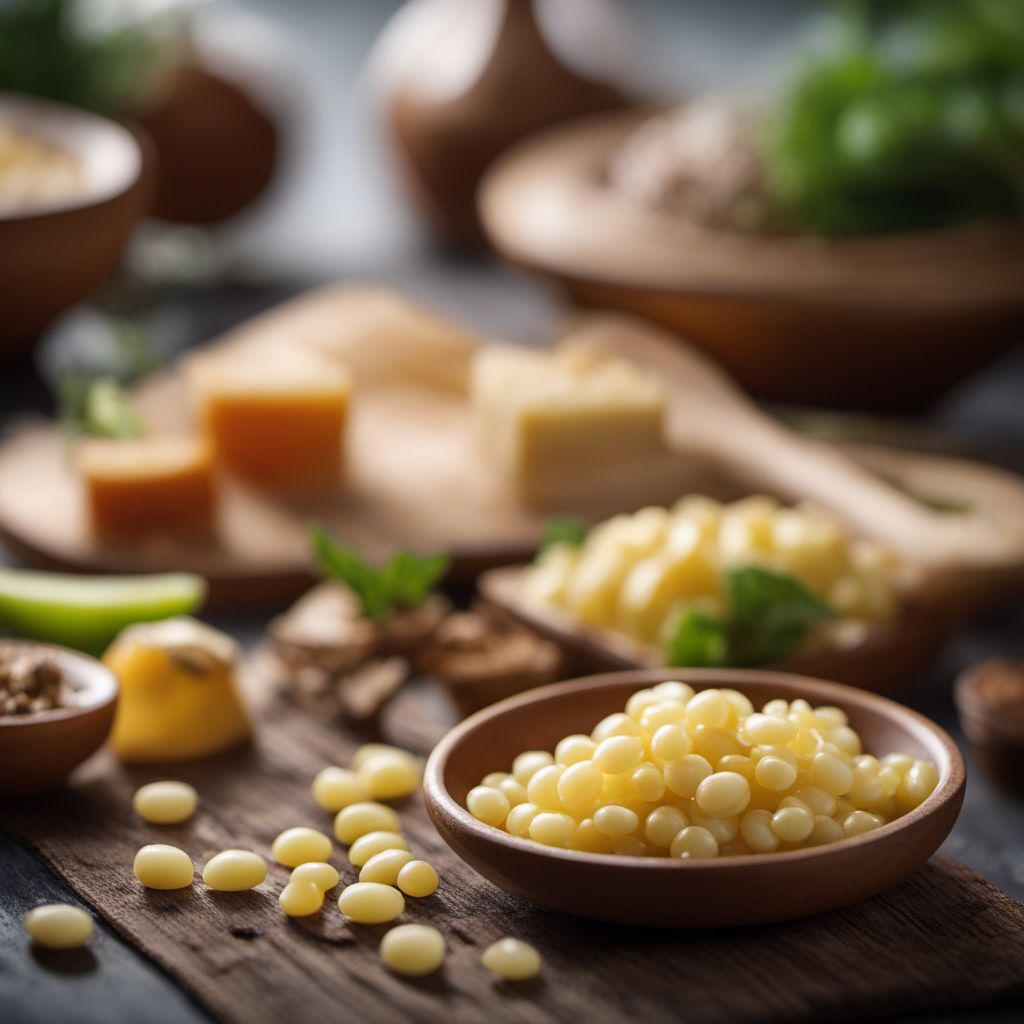
Ingredient
Chards and similar-
The Versatile Leafy Greens: Chards and Similar Varieties
Chards and similar leafy greens belong to the Chenopodiaceae family and are characterized by their large, dark green leaves and colorful stems. They have a mild, slightly earthy flavor with a hint of bitterness, and their texture can vary from tender to slightly chewy, depending on the cooking method. These greens are known for their vibrant colors, with Swiss chard featuring bright red, yellow, or white stems, and rainbow chard showcasing a mix of vibrant hues.
Origins and history
Chards and similar leafy greens have a long history of cultivation and consumption, dating back to ancient times. Swiss chard, in particular, has its origins in the Mediterranean region, where it was highly valued for its nutritional properties. It eventually spread to other parts of Europe and the Americas, becoming a staple ingredient in various cuisines. Today, chards and similar leafy greens are cultivated worldwide and are enjoyed in a wide range of culinary traditions.
Nutritional information
Chards and similar leafy greens are low in calories and rich in essential nutrients. They are excellent sources of vitamins A, C, and K, as well as dietary fiber and various minerals, including iron and magnesium. A 1-cup serving of cooked Swiss chard provides approximately 35 calories and meets a significant portion of the daily recommended intake of several key nutrients.
Allergens
Chards and similar leafy greens may contain traces of allergens, such as oxalates, which can cause adverse reactions in individuals with certain health conditions, such as kidney stones. It is advisable to consult with a healthcare professional if you have specific dietary restrictions or concerns.
How to select
When selecting chards and similar leafy greens, look for bunches or bags that have vibrant, crisp leaves and stems. Avoid wilted or yellowing greens, as they may indicate poor quality or age. Additionally, opt for organic or locally grown varieties whenever possible to support sustainable farming practices and ensure the freshest produce.
Storage recommendations
To maintain the freshness and quality of chards and similar leafy greens, remove any rubber bands or ties and store them in a perforated plastic bag or airtight container in the refrigerator. The perforations allow for proper air circulation, preventing moisture buildup and extending the shelf life of the greens. It is best to use them within a few days of purchase for optimal flavor and texture.
How to produce
Chards and similar leafy greens can be easily grown in home gardens or small-scale farms. They thrive in well-drained soil, ample sunlight, and regular watering. Seeds or young plants can be purchased from nurseries or online retailers specializing in vegetable seeds. With proper care and maintenance, chard plants can yield a continuous harvest of fresh greens throughout the growing season.
Preparation tips
Chards and similar leafy greens can be prepared in various ways to suit different culinary preferences. They can be enjoyed raw in salads, where their vibrant colors and crisp texture shine. They can also be sautéed with garlic and olive oil for a simple and flavorful side dish. Additionally, chards and similar greens can be added to soups, stews, stir-fries, and pasta dishes to enhance their nutritional value and add a pop of color. When cooking, it is important to note that the stems may require slightly longer cooking times than the leaves to achieve desired tenderness.
Substitutions
Spinach, kale, and collard greens can be used as suitable substitutes for chards and similar leafy greens. While they may have slightly different flavors and textures, they offer similar nutritional benefits and can be used interchangeably in most recipes.
Culinary uses
Chards and similar leafy greens are incredibly versatile and can be used in a wide range of culinary applications. They are commonly used in salads, where their vibrant colors and crisp texture add visual appeal and freshness. They can also be incorporated into stir-fries, soups, stews, and sautés to add a nutritious boost and a touch of earthy flavor. Additionally, chards and similar greens can be used as a filling for savory pies, quiches, and wraps, or as a topping for pizzas and flatbreads.
Availability
Chards and similar leafy greens are commonly available in regions where they are cultivated, including Europe, North America, and parts of Asia. They can be found in grocery stores, supermarkets, farmers markets, and specialty food stores that offer a wide range of fresh produce.


